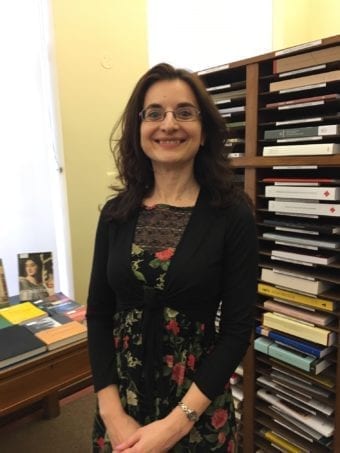Claudia Daniotti
Fall 2019

Claudia Daniotti is an art historian and researcher specializing in Italian Renaissance art, with an emphasis on iconography, the classical tradition and the transmission of visual motifs from antiquity to the present times. She holds a PhD from The Warburg Institute, University London, and a BA (Hons) and MA in History of Art from the Ca’ Foscari University, Venice. Her first monograph on the reception of the myth of Alexander the Great in Renaissance Italian art, based on her doctoral dissertation, will be published in 2020.
Since 2004, Claudia has been lecturing both in academia and museums, teaching across a range of areas and periods in Italian art history spanning from the fourteenth to the mid-twentieth century. She was a Visiting and Associated Lecturer in Renaissance and Baroque to Neoclassical Art at Buckingham and Bath Spa Universities (2016–2019), a Teaching Assistant at the Warburg Institute (2014), and worked for three years at the Estorick Collection of Modern Italian Art as an Education and Exhibition Assistant (2008–2011). She is also an experienced tour guide, having led bespoke guided tours to museum permanent collections and temporary exhibitions for years, both in Italy and the UK. Claudia has published extensively in the fields of the classical tradition and fourteenth- to eighteenth-century art history, contributing essays, articles and catalogue entries to a number of edited volumes, journals, exhibition catalogues and conference proceedings. She is a founding member of the association and on-line journal Engramma. La tradizione classica nella memoria occidentale, on whose editorial board she sat until 2015.
During her fellowship at CIMA, Claudia will investigate Marino Marini’s sculpture in light of its appropriation and reinterpretation of models from antiquity, particularly from ancient Etruria and Egypt. Her research project aims to reassess Marini’s work within the context of the wider reception of those civilizations in late nineteenth- and early twentieth-century Italy, and in relation to the coeval changing perception of the ancient past and the Fascist redefinition of a new national identity.
